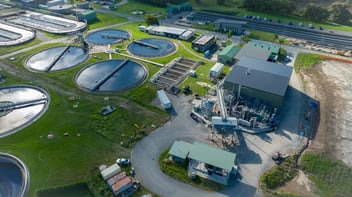How systems thinking could boost urban water resilience

Have averages had their day? A leading analyst makes the case for using systems thinking to improve approaches to urban water resilience.
Presenting at Ozwater’22 on taking a systems approach to characterising urban water markets, Urban Water Cycle Solutions Director and ANU Crawford School of Public Policy Professor Peter Coombes’ recent investigation aimed to uncover a detailed assessment of social, ecological and economic impacts.
“Taking an average analysis of urban systems components obscures threats, as well as opportunities,” he said.
“This investigation utilised historical big data from Greater Sydney and Melbourne in a bottom-up (built up from the property scale) systems framework to characterise urban water markets, and develop understanding of parameters that describe for socio-ecological-economic resilience.
“Highly spatially and temporally resolved analysis revealed behaviours, challenges and opportunities hidden by average analysis.”
Coombes said this process unmasks the systemic effects and trade-offs of government policy and regulation, and external shocks throughout the urban areas.
“These effects are linked – from policy to demands for services to household welfare to waterway health and state budgets. Furthermore, the significance of resilience parameters and thresholds is different for Sydney and Melbourne,” he said.
Historical data and systems thinking
Coombes said the Greater Melbourne and Sydney regions have been subject to multiple shocks during the last two decades, creating water market pressures.
“These shocks include floods, droughts, fires, climate change, economic recession and growth, variable political decisions, town planning choices and pandemic,” he said.
“These processes influence the behaviours of households, businesses and institutions, which creates direct and feedback responses across the scales from property to region in the urban water market.”
In Coombes’ investigation, the urban water markets in Sydney and Melbourne were characterised using historical information to include all activities and participants that provide or save water or influence water impacts across the urban regions.
“The analysis includes information and data from property, local government, utility and regional scales that is framed by water, sewerage, stormwater and waterway networks. Government policies and regulation, weather and climate processes, town planning and demographic, ecological and economic data are inputs to the process,” he said.
“The systems analysis was used to generate outcomes for utility costs and revenue, streamflow in rivers, impacts on urban waterways, sewerage discharges, water demands, household welfare and energy use.”
Developed over the two decades, bottom-up systems framework models that include behavioural algorithms were used to evaluate the historical big data to understand the drivers, responses and linkages throughout both urban systems, Coombes said.
“This information enabled the formation of objectives to evaluate social, ecological and economic resilience of urban areas,” he said.
“The key drivers of socio-ecological-economic resilience were identified from this process for inclusion of robustness, recovery and resistance in ongoing investigations.”
Critical influences
Analysing data from the last two decades as a linked system, and at much more refined spatial and temporal scales, has provided important insights about influences that can be further drawn on to bolster resilience.
“This approach has revealed significant trade-offs between the social, ecosystem and economic aspects of the urban water market, and revealed the key thresholds needed to define government policy,” Coombes said.
“The critical influences on the socio-ecosystem-economic resilience in the urban water markets were household welfare, regulatory methods and government policy, distributed water conservation and sources, total dam storage volumes and supply of desalinated water. Further investigations aim to clarify the parameters that describe the nexus between ecosystem services and urban areas.
“Regulatory and policy settings created strong variation in the components of the urban market and function of government utilities, which in turn drive impacts on urban waterways, rivers, household welfare and state budgets.
“The costs of utility services were found to be highly spatially dependent across each city.”
Coombes said climate change is expected to drive declines in the liveability and employment in urban areas, leading to changes in government policy and economic restructure that will further impact demands for utility services.
“The costs and energy impacts of utility services are also strongly impacted across time and space by town planning decisions. The density of urban areas and lengths of utility infrastructure to each area were key drivers of these effects,” he said.
“The highly resolved spatial temporal nature of the systems investigation provides understanding of potential hot spots, structural weaknesses and critical thresholds across multiple scales in each region.”
Interested in hearing more about outcomes of taking a systems analysis approach to urban water markets? Register for Ozwater’22 here.



